
Tiago Bilhim remembers Professor João Bexiga Martins Pisco, who passed away on 26 March 2019, during the annual meeting of the Society of Interventional Radiology (Austin, USA): “He was very accessible and kind, fond of teaching and enthusiastic about all types of minimally-invasive image-guided interventions.” Bilhim reflects on the “legacy” Professor Pisco leaves behind, following a life-time of pioneering research.
Professor Pisco was a renowned physician, both in his home country of Portugal and worldwide, and was especially esteemed amongst the radiology and interventional radiology community. He leaves behind a legacy, his work a major influence within the Portuguese radiology community. Professor Pisco had an immense interest in image-guided interventions, and his career tracked the evolution of interventional radiology from its beginnings in the 1970´s until the end of his life in 2019, by which time he was a landmark figure for interventional radiology throughout the globe.
He graduated in medicine in Coimbra, Portugal, and completed the radiology residency in Lisbon, Portugal (1972–1975). Between 1975 and 1976 he undertook a fellowship in cardiac radiology in the National Heart Hospital in London, United Kingdom. Afterwards, he continued his international career as a fellow, instructor and consultant radiologist at the University of Louisiana, USA (1977–1980). These three years in the USA had a profound effect on his whole career, shaping the way he approached medicine and patient care. He decided to pursue interventional radiology, embracing teaching and scientific research simultaneously. Those who learned from him knew his very practical and “American” way of working: “See one, do one, teach one”. He was very accessible and kind, fond of teaching and enthusiastic about all types of minimally-invasive image-guided interventions. With this in mind, Professor Pisco returned to Portugal in 1980, and became one of the great pioneers in interventional radiology. During his further 40 years of practice in Portugal, he was responsible for the dissemination of interventional radiology within our country. He was the director of the Radiology Department of the Santa Marta Hospital between 1980 and 1998. Later, he was the director of the Radiology Department of the Pulido Valente Hospital from 1998 through to 2005. He then became head of the Interventional Radiology Unit from Saint Louis Hospital in Lisbon, a position he held from 1998 until his death.
Those who knew him experienced his enthusiasm for all interventional radiology procedures, and how he always highlighted the huge impact they had on patients’ lives; offering many different treatment options, alternatives to surgery with lower morbidity and mortality. He was responsible for the implementation of many different interventional radiology techniques within Portugal, such as: percutaneous transluminal angioplasty; intra-arterial fibrinolysis; arterial and venous stent placement; arterial embolization; intra-arterial chemoembolization; inferior vena cava filter placement and sclerotherapy of varicocele and pelvic venous congestion syndrome. He became known worldwide for his scientific research regarding arterial embolization for pelvic tumours in the 1980s at the Santa Marta Hospital, but is mainly recognised for the research he developed at Saint Louis Hospital on uterine fibroid embolization from the late 1990’s and, since 2009, on prostatic artery embolization. He truly put Saint Louis Hospital in Lisbon on the map from the perspective of the interventional radiology community. This small hospital received hundreds of interventional radiologists and urologists in the last decade that came in to learn about prostatic artery embolization (Figure 1). During his lifetime work at Saint Louis Hospital, we performed over 2,100 uterine fibroid embolizations and 1,500 prostatic artery embolizations, with a huge impact in all of these patient’s lives. He was married to Beatriz (Figure 2) and they had a daughter, Joana, who is following Professor Pisco’s passion for interventional radiology (Figure 3).

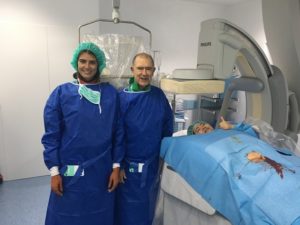
Besides these clinical activities, Professor Pisco was a dedicated teacher and scientific researcher. He completed his PhD thesis in interventional radiology at the Nova Medical School in 1990 (Figure 4). His chosen research topic was the vasa vasorum changes following percutaneous transluminal angioplasty and stent placement in experimental arterial stenoses in a canine model; this was published in the Journal of Vascular and Interventional Radiology (JVIR) in 1993 and 1994. Many of the publications and scientific research in the 1980´s and 1990’s included case-reports and retrospective cohort studies of the first patients treated in Portugal with percutaneous transluminal angioplasty, stent-placement and arterial or venous embolization. From 2008, most of the work developed at Saint Louis Hospital in uterine fibroid embolization and prostatic artery embolization started to appear in all of the major international radiology journals, including Radiology, European Radiology, JVIR and Cardiovascular and Interventional Radiology (CVIR), amongst others. He published over 200 research manuscripts, participated in over 400 presentations during scientific meetings, published six books and 78 book chapters, and received many awards for his scientific research in prostatic artery embolization (Figure 5). He was a devoted teacher, becoming the head of the Radiology Department at the Nova Medical School from 1997 to 2011. He taught all medical students during that time-period, introducing them to the fundamental role of radiology in medicine and of interventional radiology in patient care. He would invite the best medical students to pursue interventional radiology, letting them perform the simplest procedures first, and guiding them through many subsequent interventions. He was also responsible for the post-graduate courses in radiology and interventional radiology that were held in Lisbon every other year; 22 overall (Figure 6). He would have national and international renowned faculty and approximately 200–300 attendants. Through all of this exhausting work, he shaped the present and future of radiology and interventional radiology not just in Portugal, but worldwide.
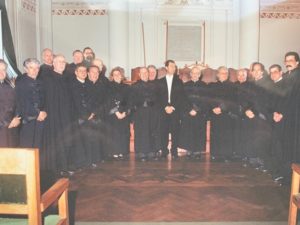
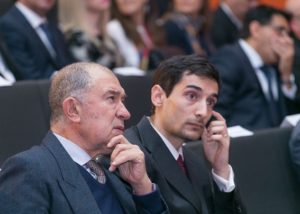
Professor Pisco kept his “American” influence and was an entrepreneur and pioneer. He always tried to maintain the bond between clinical practice and scientific research, and his constant eagerness for new studies and publications made him a frequent participation in all European and American interventional radiology meetings (in particular the annual meetings of the Cardiovascular and Interventional Radiological Society of Europe (CIRSE) and the Society of Interventional Radiology (SIR)). During the last 20 years, one can finger-count the number of CIRSE or SIR meetings where Professor Pisco was not there presenting the most up-to-date results from our group on uterine fibroid embolization and prostatic artery embolization. He was very active during the latest CIRSE meeting in Lisbon (22–25 September 2018), and was present at the last SIR in Austin, USA (23–28 March 2019). Those who knew his passion for interventional radiology meetings are not surprised that he passed away during one—this was his “home away from home”. He died after a full day of prostatic artery embolization sessions, where he participated both as presenter and commenter. Late in the afternoon he received an award from the JVIR regarding one of our group’s publications from 2018; he was notably happy (Figure 7). Professor Pisco loved the recognition from his peers, loved SIR and CIRSE, and received three prizes from the JVIR during the last 10 years in the field of prostatic artery embolization. This was a perfect ending—already in the clouds after receiving another award even before passing away. He left us, certain that future generations touched by his passion for interventional radiology will keep alive all minimally-invasive, image-guided therapies—embolization and angioplasty—as alternative treatment options to surgery.

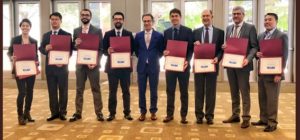
For all of the patient’s lives that he helped to save, all of the medical students he taught, all of the radiologists and interventional radiologists that he taught—thank you! I hope to see you someday again.
Tiago Bilhim is an interventional radiologist in Lisbon, Portugal.

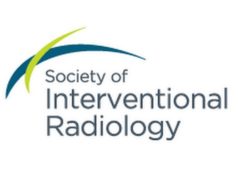












In 2014, Professor Pisco performed at the São Luís hospital, in Lisbon, the treatment of embolization of the prostatic artery of our blogger. Surprisingly, this news became known in Funchal, early January 2020.
Our deepest condolences to the family and friends!